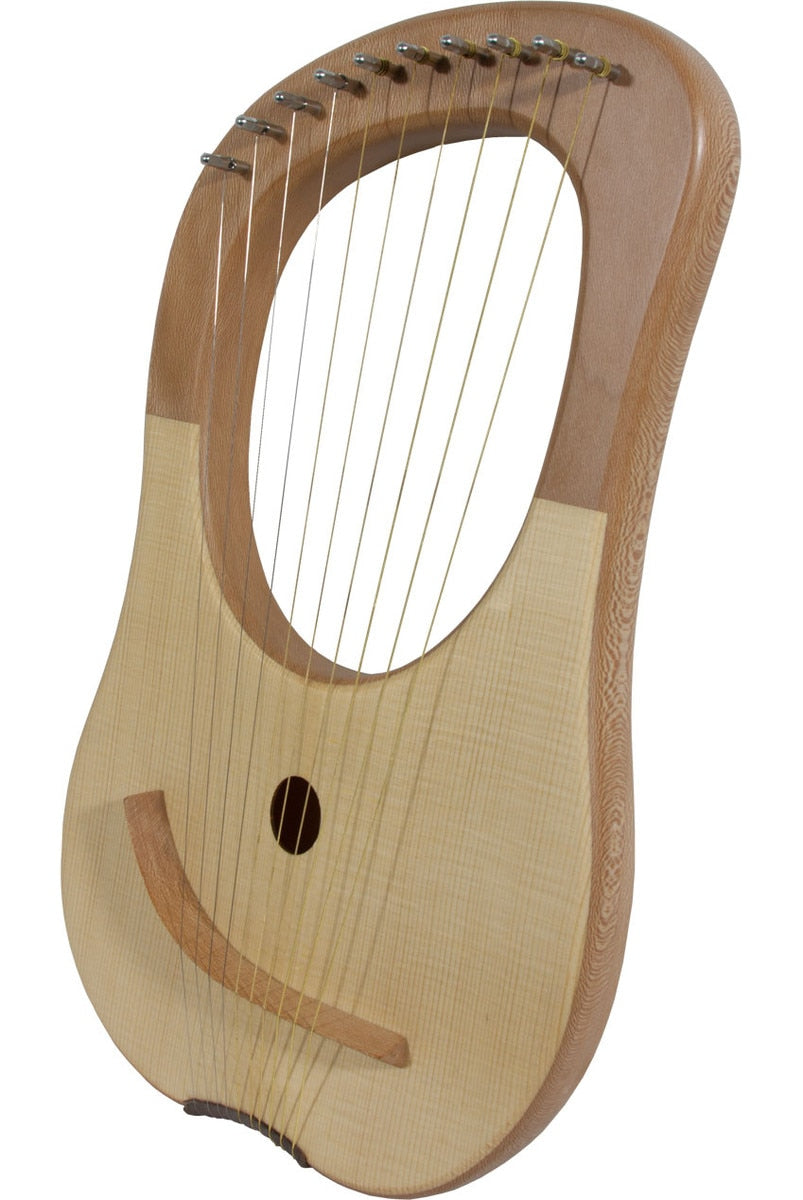Description
- The solid lacewood body of this ten-string lyre complements the soft and gentle curves of the instrument. The ten metal strings produce a classical sound that is further enhanced by the solid spruce soundboard.
- The lyre can be held upright on one’s lap or while walking, allowing for plucking of both sides of the strings. Alternatively, it can be laid flat for plucking.
Dimensions:
- 8.25 inches wide by 16 inches long, 2.75 inches deep.
Suggestions for tuning:
- Judaic Worship Tuning: This authentic tuning originates from Judaic worship music, where the instrument accompanied the singing of the Chazzan, also known as a Cantor. This style of tuning utilizes the Chazzanut mode. To tune the instrument in this mode, begin with the bass strings (largest strings) as follows: D E F G# A B C D E F.
- Klezmer Music Tuning: In the early Middle Ages in Eastern Europe, the secularization of Jewish worship music led to the development of Klezmer music. Jewish troubadours, known as klezmorim, incorporated Klezmer music into weddings and other joyous events. Klezmer music eventually blended with Slavonic, Greek, Turkish, Gypsy, and even American jazz tempos and rhythms. For Klezmer music, the Misheberakh mode is recommended: E F# G A# B C# D E F# G.
- Alternative Tuning for Singers in the Key of G: Two alternative tuning methods that are suitable for singers comfortable in the Key of G are (again, bass to treble): E F# G A B C D E F# G and D E F# G A B C D E F# (E is the tonic). In the second tuning, all the notes are the same, but the instrument is tuned starting on D rather than E.


